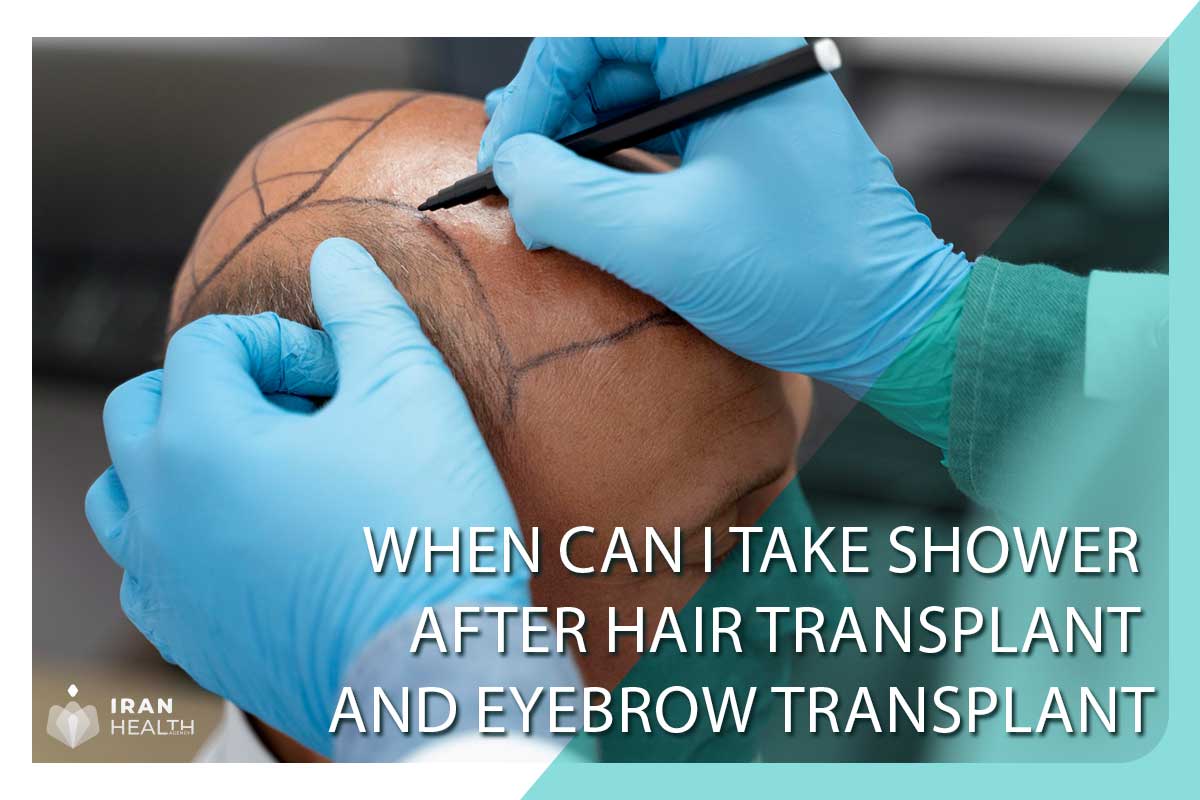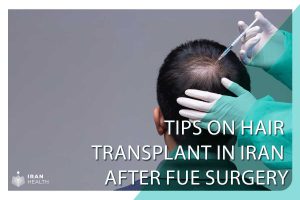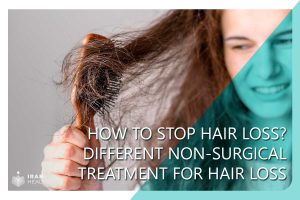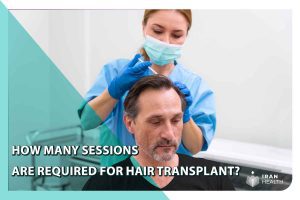Alopecia or hair loss, whether permanent or temporary because of hormonal changes, genetic factors, particular conditions such as hyperthyroidism, another reason can affect various parts of the body, especially the scalp. This disorder is more prevailing in males than females. People’s response to hair thinning is not equal. Some prefer to continue living with their head’s baldness, but others look for suitable ways to improve their hairstyle, such as a particular diet and medicines that may restore hair growth. Before trying available treatments, you should find out why you are going through hair loss and consider possible causes. to this article we want to talk about hair transplant in iran and eyebrow transplant and What are the efficient ways to treat hair loss?
What hair loss symptoms?
One of the leading hair losses is gradually thinning the top of the head, which is highly prevailing in males and shows itself in females through a receding hairline.
Some people experience hair loss due to emotional or physical events. Hair loss follows a coin shape pattern; however, this kind of loosening of hair is temporary, and it resolves as soon as a person’s condition becomes stable.
The patients who are under chemotherapy for cancer treatment go through temporary hair loss, and the hair grows back when the treatment comes to an end.
If your hair loss affects your social and personal life and challenges you emotionally, you should see a doctor find out the hair loss cause. Losing 50 to 100 hair within a day is normal because your hair grows at the same pace; don’t worry.
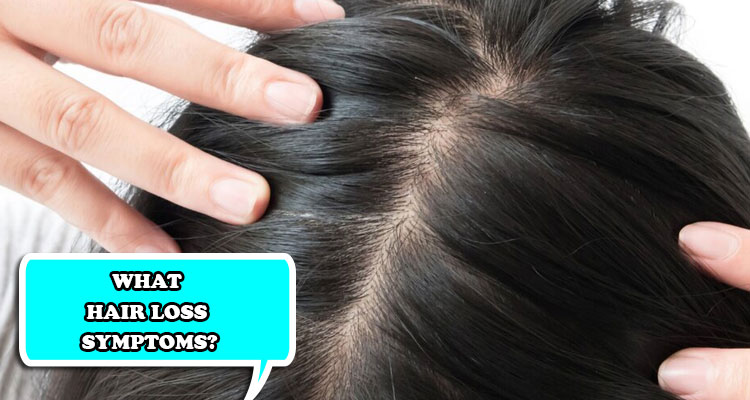
Some factors that promote hair loss risk are:
- genetic and heredity
- age
- consuming some medicines and supplements
- stressful events like a job interview
- inappropriate nutrition
- significant weight loss
- hormonal changes
- specific hairstyles
How is hair loss diagnosed?
The doctor starts a physical exam to evaluate hair loss symptoms such as losing pattern, the condition of the scalp, and your hair’s thickness. If necessary, he orders you to do a blood test to see something wrong with your overall health, and he may request a scalp biopsy. In addition, the laboratory will use a microscope to inspect your hair roots and reject the possibility of infection or severe disease.
What are the efficient ways to treat hair loss?
The efficient ways to treat hair loss are introduced after detecting the cause of this disorder. Sometimes the patient does not need necessary treatments because his hair regrows in a year, but occasionally a doctor will prescribe some medicines to help hair growth.
If the doctor concludes that hair loss happened due to underlying diseases, he will start suitable treatment and ask the patient to consume it for a specific period of time.

Hair loss may occur due to vitamin insufficiency, so the patient will need some supplements to maximize vitamins level in the body. The doctor suggests that him/her follow a rich vitamin diet, including fresh vegetables and fruits
20 must-know about beard transplantation.
One of the over-the-counter medicines which are available in the form of foam and liquid is minoxidil, and the patient should apply it on his scalp skin once or twice a day.
After a while, he will see that new hair is growing, or the process of losing hair will slow down. If you want to try minoxidil, you must know that at least 6-months of continuous applying is compulsory for new hair regrowth. Still, whenever you stop using minoxidil, your hair will start falling.
Some patients complain about unwanted hair growth across their forehead and scalp inflammation. The following medicine which is prescribed for men is finasteride, which helps reduce hair loss and even hair growth; you should use this pill for some months to see its efficacy, but if you are over 60, it may not create critical results.
Be alert that finasteride may promote prostate cancer risk and reduce sexual function. The best treatment to regrow hair is hair transplant surgery which gives you a beautiful and younger-looking. This restorative surgery helps acquire satisfying results; it is applicable for the scalp, eyebrow.
What is a hair transplantation surgery?
Hair restoration or hair transplant in Iran is an effective surgical procedure that uses the patient’s hair follicles to treat hair loss permanently. In this technique, the doctor uses suitable and healthy hair follicles from the donor site to be planted in the recipient’s spot.
Hair transplant is a less invasive procedure, and the doctor will use resistance to balding follicles to fill the blank parts of the scalp.
The follicles of the back of the head can be used for hair, eyebrow, eyelash, and beard transplantation. The doctor assesses the patient scalp to ensure that he benefits from a good hair bank then introduces the best procedure to achieve the most satisfying results.
This cosmetic surgery is performed under local anesthesia as an outpatient procedure, so the patient can go home when hair transplant is finished. This procedure is divided into two groups, including follicular unit extraction (FUE) and (FUT), creating similar results but following different principles.
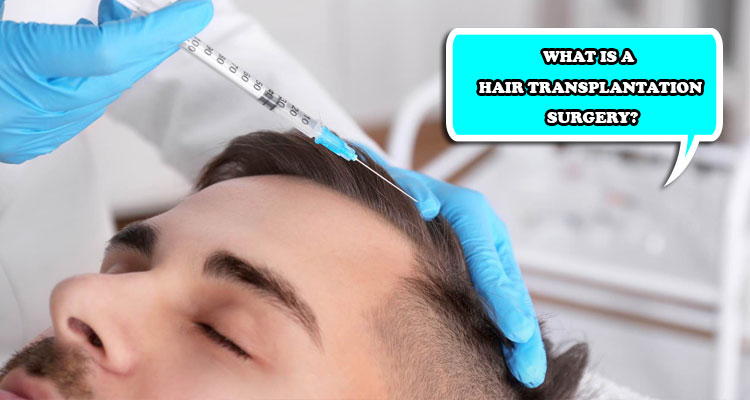
What is FUE?
FUE or follicular unit extraction benefits from creating tiny punctures under local anesthesia to harvest healthy follicles, including 1 to 4 hairs to be prepared for transplant in recipient locations. The recipient locations are punctured for transplanting prepared and cleaned grafts to create a realistic and actual hair pattern.
The doctor can execute a procedure in one or several sessions because it is time-consuming, and the required time to harvest and transplant new hair is not equal in all patients.
The outcomes are highly natural; few people found out that you have been on their hair transplantation because follicles are harvested individually, and scars will disappear when the hair starts to grow. The post-surgery pain is tolerable, and recovery time is less than a week, but it is more expensive than another hair transplant surgery.
What is FUT?
FUT or follicular unit transplantation is the famous but traditional method for hair transplanting. The doctor removes a strip of hair from the back of the head to isolate the hair grafts and prepare them for transplanting. If a skilled and experienced surgeon performs this cosmetic procedure, the patient can enjoy natural results, and transplanted hair mimics the natural hair growth.
One of the advantages of this procedure is that the doctor can perform hair transplanting in a short period of time, so it would be better to say that FUT is a time-saving procedure that provides the possibility of transplanting a significant number of grafts in one session.
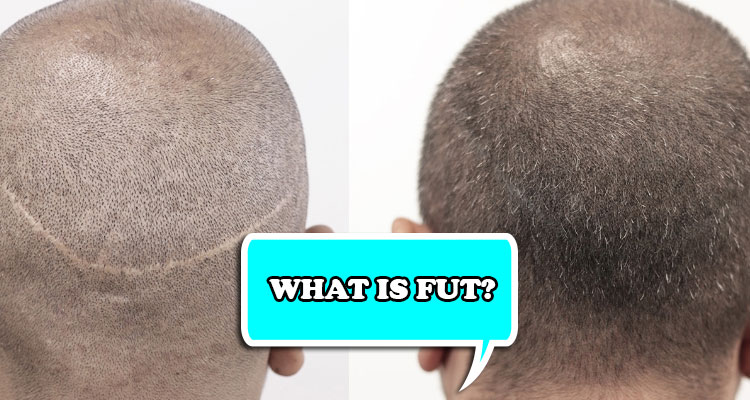
What is an eyebrow transplant in Iran?
Eyebrows influence the beauty of male and female faces, and some people are not satisfied with your eyebrows, so they look to find a suitable way to improve eir beauty.
Eyebrow transplanting follows the same principles of transplanting, and the surgeon separates suitable follicles from the back of the head to be transplanted in the recipient’s parts of the face. The number of required follicles depends upon the patient’s decision about the desired style. The doctor takes advantage of FUE for eyebrow transplanting.
What is a cosmetic beard transplant?
Beard symbolizes masculinity and in some specific cultures having a beard is necessary, which challenges a group of men with less hair on faces. Beard transplant in Iran helps this group of people to take advantage of medical procedures to achieve a masculine appearance and an impressive face structure. The hair of the back of the head is appropriate for the beard transplant process.

Which group of people are excellent candidates for hair transplanting?
Hair restoration is a popular procedure suitable for anybody between the ages of 20 to 60, provided to have an ideal hair bank and physical healthiness. if you are among the following groups, you would be an excellent candidate for hair transplanting, eyebrow or beard transplanting beard:
- If you suffer from a male pattern baldness
- if you suffer from thinning hair
- if your hair beauty is affected due to injury and scar
- if you have a suitable and enough hair bank at the donor area
Do’s and don’ts of hair transplantation.
Hair transplant is a sensitive procedure, and it is highly significant to take proper precautions to reduce the possible risks. The doctor suggests you follow pre- and post-operative recommendations, which are defined in below:
- it would be best if you didn’t consume non-steroid anti-inflammatory anon strawweight medicines including aspirin, ibuprofen and naproxen, vitamin E, herbal supplements, and medicines that thin the blood
- the doctor asks you to avoid applying a cortisone cream over the donor and recipient locations because it maximizes the possibility of bleeding during hair transplant in Iran
- consuming alcoholic drinks and smoking is forbidden because it postpones the recovery time
- After implanting hair grafts in the recipient site, the doctor suggests following instructions to increase hair chance of growing more new hair
- you should avoid using hair gels and any styling products
- you should consume prescribed medications based on doctor’s recommendations
- washing your scalp with a particular shampoo or foam is necessary
- you should avoid exercising and strenuous activities and consuming too much caffeine drink
- it will help if you lay your head on an elevated surface for a week after hair restoration to reduce the head and face swelling
- consume enough water
- you shouldn’t touch your scalp and be gentle with your hair at the time of bathing
Hair transplantation recovery time
Most patients can start their social and personal activities three days after hair restoration. Although recovery time is desirably short, the patient should take care of transplanted hair and follow the doctor’s order regarding washing head and changing bandages, avoid exercising for a month, and medicines that increase bleeding risk.
In less than a week, the bandages should be removed, but the patient should avoid touching implanted grafts to reduce the risk of displacing grafts.
Do and don’ts after the hair transplant in Iran
After a week, that patient can wash his hair and touch his head, and the non-dissolvable stitches are removed within two weeks. Some weeks later, transplanted hair starts to fall and regrow after 6-months; the final results are observable after one year to 11 months.
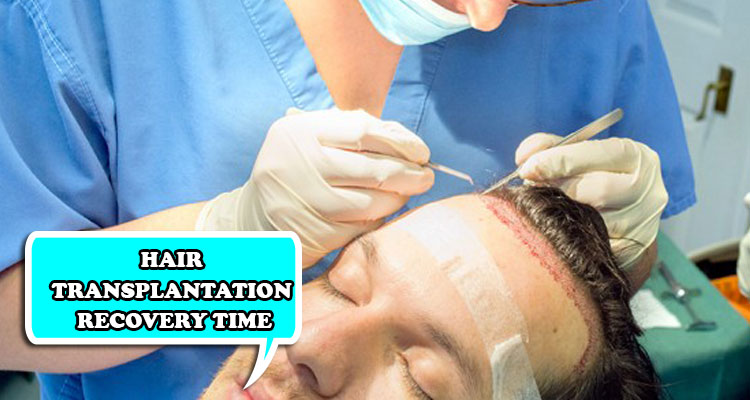
When can I take a shower after a hair transplant and eyebrow transplant?
Washing your head after a hair transplant in Iran is a critical aspect that must be done according to the doctor’s particular recommendations.
He gives you a hair wash kit containing particular shampoo and foam and sprays that help the rate of surgery success. It would be best if you washed your head two days after a hair transplant in Iran, spray recommended foam to cover a transplanted hair and let it remain on your skin for a specific period of time, and then wash it gently with lukewarm water.
Avoid pressure on your scalp or your eyebrows or beard; otherwise, your implanted grafts will damage. After washing your head thoroughly, apply sprays or medicines that assist in promoting the rate of transplanted hair survival.
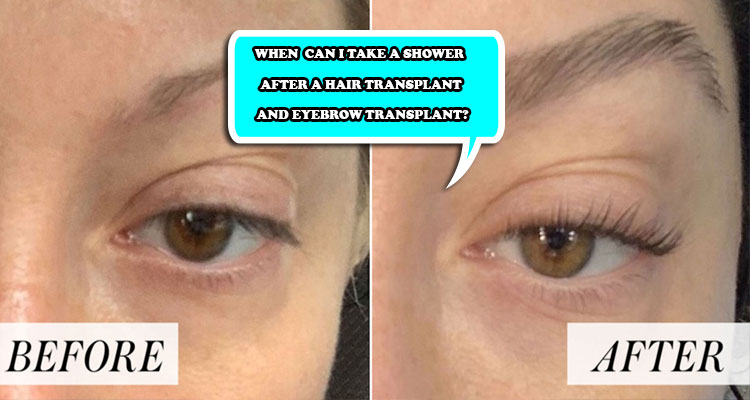
What are the complications of hair transplant?
Hair restoration is among safe procedures, but the patient may experience some side effects such as:
- scalp infection
- allergic response to local anesthesia
- bleeding
- swelling
- pain
- itching
- visible scars
- follicle inflammation
How much the hair transplant cost?
The cost of this cosmetic treatment depends upon various factors such as:
- the patient’s geographical location
- selected surgical procedure
- doctor’s skills and experiences
- the number of necessary grafts
- the expenses of required tools and equipment for surgery
- the expenses of prescribed medications
Is hair transplant and eyebrow transplant painful processes?
Eyebrow and hair transplants are not considered painful because the doctor uses local anesthesia to harvest hair grafts and implant them in their recipient locations. So, you feel no discomfort or pain during this cosmetic procedure; however, if you experience pain after a hair transplant, you may consult with your doctor for more recommendations to consume a painkiller medicine.
Can women go through hair transplant procedures?
The answer is positive, and the doctor can also perform hair transplants and eyebrow transplant in Iran in women. There are no limitations about women’s hair transplants, but the doctor requests some tests to make sure that patient hair loss does not occur due to hormonal changes; otherwise, the patient will not acquire relevant results.
Related post
Necessary measures before Hair transplant
